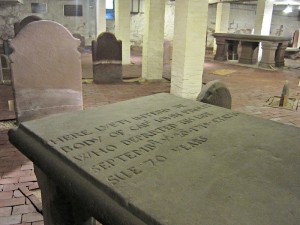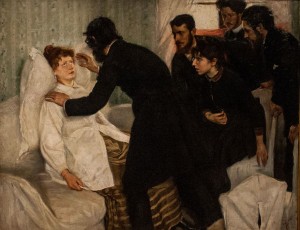Enter Thy Crypt: The Underground Cemetery
Basements are spooky. Cemeteries are spookier. Put them together and what have you got? Extra spooky. But, beautiful and fascinating, these graves seem particularly safe and sound in their underground lair…
(Halloween is over, but the Halloween posts never really end here at The Museum of Mysteries do they?)

How a Cemetery Ends Up Underground
by Allison Meier (Atlas Obscura)
“There’s no shortage of churches with crypts. However, while these are on the whole designed with the building. there’s one place where something much more unusual happened: the church was built right over a cemetery which it consumed as its crypt.
The Crypt at Center Church on the Green in New Haven, Connecticut, is situated among three churches on the New Haven Green, a grassy area downtown that was part of colonist John Brockett’s Puritan city planning for an ideal spiritual city. The Green was given the right dimensions to hold 144,000 people — the number they believed would be saved in the Second Coming of Christ. Judgment Day still hasn’t arrived, and an economic downturn of recent years makes this area less divine and more downtrodden. But go back to the 17th century, and it was bustling, including as a burial ground.
Yet in true Poltergeist-fashion, when in the 1820s the graveyard was relocated to the new Grove Street Cemetery, only the headstones were moved. By some estimates there are between 5,000 to 10,000 souls still buried below the Green, although one was disturbed during 2012’s Hurricane Sandy when a tree was dislodged from the ground, and a skeleton was found coiled in the roots. Specifically, a skull was spotted just before Halloween with its jaw swung open as if in a silent howl, while a spine and rib cage remained attached.
This is all to say that the Center Church on the Green crypt is just a section of a secret necropolis that’s mostly forgotten. Recently the New York Obscura Society visited the crypt as part of our road trip to New Haven. Entering the church, you see a blazing white interior with fascinating historic details like the pew used by Eli Whitney. Marble engravings above the entrance hint at something more…”
For the complete piece, and many photos, click here.
Share



